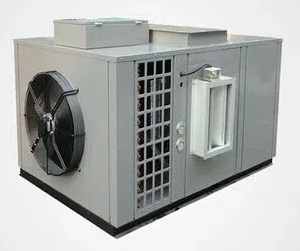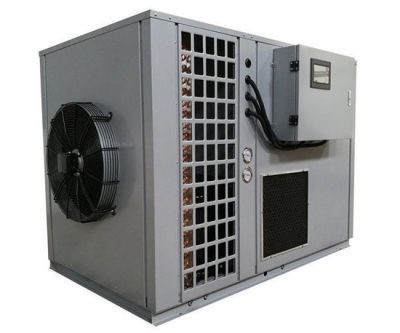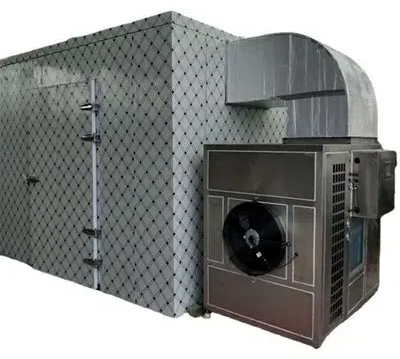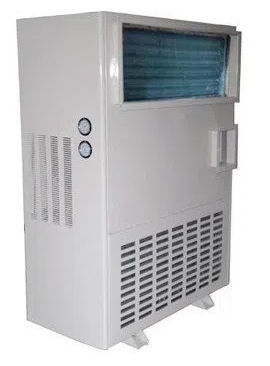
Content Menu
● Introduction
● Understanding Heat Pump Dryer Technology
>> How Heat Pump Dryers Work
● Are Heat Pump Dryers Vented?
>> Ventless Design Benefits
● Heat Pump Dryers vs. Vented Dryers
>> Vented Dryers
>> Heat Pump Dryers
● Energy Efficiency of Heat Pump Dryers
>> Energy Savings
● Installing Heat Pump Dryers
>> Installation Requirements
>> Ideal Locations
● Maintenance of Heat Pump Dryers
>> Regular Maintenance Tasks
● Pros and Cons of Heat Pump Dryers
>> Pros:
>> Cons:
● Best Heat Pump Dryers for Homes
● Eco-Friendly Laundry Solutions
● The Future of Laundry Technology
● Conclusion: Are Heat Pump Dryers Right for You?
● Frequently Asked Questions
>> Q1: Do heat pump dryers need to be vented?
>> Q2: Are heat pump dryers more expensive to buy?
>> Q3: How long do heat pump dryers take to dry clothes?
>> Q4: Are heat pump dryers better for clothes?
>> Q5: How much maintenance do heat pump dryers require?
Introduction
In the ever-evolving world of home appliances, heat pump dryers have emerged as a game-changing technology, promising enhanced energy efficiency and convenience. One of the most common questions potential buyers ask is, "Are heat pump dryers vented?" This comprehensive guide will delve into the world of heat pump dryers, exploring their ventilation requirements, benefits, and how they compare to traditional vented dryers.
Understanding Heat Pump Dryer Technology
Heat pump dryers represent a significant leap forward in clothes drying technology. Unlike conventional vented dryers that expel hot, moist air outside, heat pump dryers use a closed-loop system to recycle and reuse hot air. This innovative approach not only saves energy but also eliminates the need for external venting.
How Heat Pump Dryers Work
1. Air Circulation: Warm air circulates through the drum, absorbing moisture from the clothes.
2. Heat Exchange: The moist air passes through an evaporator, which cools and condenses the water vapor.
3. Water Collection: Condensed water is collected in a tank or drained directly.
4. Air Reheating: The now-dry air is reheated by the heat pump and circulated back into the drum.
5. Continuous Cycle: This process repeats until the clothes are fully dry.

Are Heat Pump Dryers Vented?
The short answer is no, heat pump dryers are not vented. This is one of their key distinguishing features and advantages over traditional dryers. Let's explore what this means for installation, efficiency, and home use.
Ventless Design Benefits
1. Flexible Installation: Without the need for a vent, heat pump dryers can be installed in various locations within the home, including interior rooms, closets, or apartments.
2. Energy Efficiency: The closed-loop system recycles heat, significantly reducing energy consumption compared to vented dryers.
3. Moisture Control: Since moist air isn't expelled into the home or outside, there's less risk of mold or moisture-related issues.
4. Gentler on Clothes: Lower drying temperatures help preserve fabric quality and reduce wear and tear.
Heat Pump Dryers vs. Vented Dryers
To fully appreciate the advantages of heat pump dryers, it's essential to compare them with traditional vented dryers.
Vented Dryers
Pros:
- Generally lower upfront cost
- Faster drying times
- Familiar technology
Cons:
- Require external venting
- Less energy-efficient
- Can contribute to moisture issues in homes
Heat Pump Dryers
Pros:
- No venting required
- Highly energy-efficient
- Gentler on clothes
- Flexible installation options
Cons:
- Higher initial cost
- Longer drying times
- May require more maintenance
Energy Efficiency of Heat Pump Dryers
One of the primary advantages of heat pump dryers is their superior energy efficiency. By recycling heat and operating at lower temperatures, these appliances can significantly reduce energy consumption.
Energy Savings
- Heat pump dryers can use up to 50% less energy than conventional electric dryers.
- Over time, the energy savings can offset the higher initial purchase price.
- Lower energy consumption translates to reduced carbon footprint and environmental impact.
Installing Heat Pump Dryers
The ventless nature of heat pump dryers offers greater flexibility in terms of installation. However, there are still some considerations to keep in mind.
Installation Requirements
1. Space: Ensure adequate space around the dryer for proper air circulation.
2. Power Supply: Most heat pump dryers require a 220-240V electrical outlet.
3. Drainage: Option to connect to a drain or use the built-in water collection tank.
4. Ventilation: While no external vent is needed, the room should have some air circulation.
Ideal Locations
- Laundry rooms
- Bathrooms
- Closets
- Apartments
- Basements

Maintenance of Heat Pump Dryers
Proper maintenance is crucial for ensuring the longevity and efficiency of your heat pump dryer.
Regular Maintenance Tasks
1. Clean the lint filter after every use.
2. Empty the water collection tank (if not using direct drain).
3. Clean the heat exchanger periodically (usually every 20-30 cycles).
4. Wipe down the drum and door seal regularly.
5. Check and clean the condenser unit as recommended by the manufacturer.
Pros and Cons of Heat Pump Dryers
As with any technology, heat pump dryers have their advantages and disadvantages. Let's explore both sides:
Pros:
1. Energy Efficiency: Significantly lower energy consumption compared to traditional dryers.
2. No Venting Required: Flexible installation options.
3. Gentler on Clothes: Lower drying temperatures help preserve fabric quality.
4. Eco-Friendly: Smaller carbon footprint and environmental impact.
5. Moisture Control: Doesn't release humid air into the home.
Cons:
1. Higher Initial Cost: Heat pump dryers are generally more expensive upfront.
2. Longer Drying Times: The lower temperatures mean cycles can take longer to complete.
3. Maintenance: Regular cleaning of filters and heat exchangers is necessary for optimal performance.
4. Complexity: More complex technology can mean potentially higher repair costs.
5. Learning Curve: Users may need time to adjust to the different drying process.
Best Heat Pump Dryers for Homes
When choosing a heat pump dryer, consider factors such as capacity, energy rating, features, and warranty coverage. Some top brands in the market include:
1. Miele
2. Bosch
3. LG
4. Whirlpool
5. Samsung
Each brand offers various models with different features and price points to suit diverse needs and budgets.
Eco-Friendly Laundry Solutions
Heat pump dryers are part of a broader trend towards more eco-friendly laundry solutions. Here are some additional tips for greening your laundry routine:
1. Use cold water for washing when possible.
2. Choose concentrated, eco-friendly detergents.
3. Wash full loads to maximize efficiency.
4. Consider line-drying clothes when weather permits.
5. Opt for energy-efficient washing machines to complement your heat pump dryer.
The Future of Laundry Technology
As technology continues to advance, we can expect to see further improvements in heat pump dryer efficiency and functionality. Some areas of innovation include:
1. Smart Home Integration: Enhanced connectivity and control through smartphones and home automation systems.
2. Improved Sensors: More accurate moisture and temperature sensing for optimal drying.
3. Faster Drying Times: Advancements in heat pump technology to reduce cycle duration.
4. Increased Capacity: Larger drum sizes to accommodate bigger loads.
5. Enhanced Energy Efficiency: Continued improvements in energy consumption and performance.
Conclusion: Are Heat Pump Dryers Right for You?
Heat pump dryers offer a compelling alternative to traditional vented dryers, especially for those prioritizing energy efficiency, flexibility in installation, and gentler fabric care. While they come with a higher initial cost and some limitations, the long-term benefits often outweigh these drawbacks for many consumers.
Consider your specific needs, laundry habits, and home setup when deciding if a heat pump dryer is the right choice for you. As technology continues to improve and prices potentially decrease, heat pump dryers are likely to become an increasingly attractive option for environmentally conscious consumers looking to reduce their energy consumption and carbon footprint.

Frequently Asked Questions
Q1: Do heat pump dryers need to be vented?
A1: No, heat pump dryers do not need to be vented. They use a closed-loop system that recycles hot air and collects moisture in a tank or through a drain hose.
Q2: Are heat pump dryers more expensive to buy?
A2: Yes, heat pump dryers typically have a higher upfront cost compared to traditional vented dryers. However, the energy savings over time can offset this initial investment.
Q3: How long do heat pump dryers take to dry clothes?
A3: Heat pump dryers generally take longer to dry clothes compared to vented dryers due to their lower operating temperatures. A typical cycle might take 1.5 to 2 times longer than a conventional dryer.
Q4: Are heat pump dryers better for clothes?
A4: Yes, heat pump dryers are generally gentler on clothes. They operate at lower temperatures, which can help preserve fabric quality and reduce wear and tear over time.
Q5: How much maintenance do heat pump dryers require?
A5: Heat pump dryers require regular maintenance, including cleaning the lint filter after each use, emptying the water tank (if not using a direct drain), and periodically cleaning the heat exchanger and condenser unit. While this may be more maintenance than a traditional dryer, it's essential for maintaining efficiency and performance.












